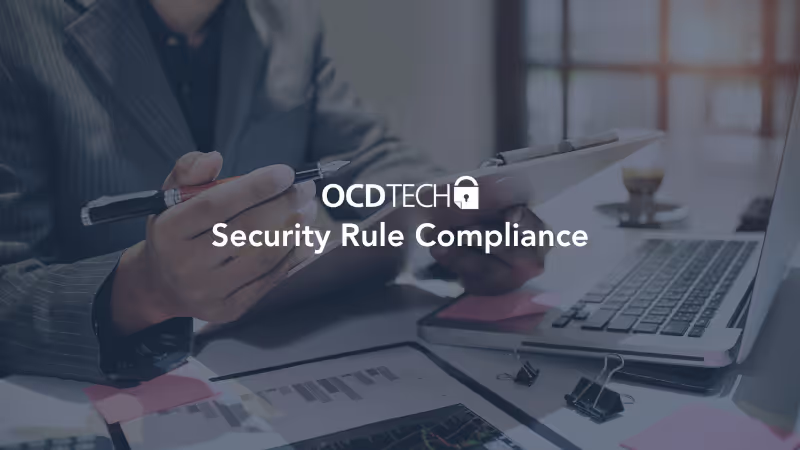By
OCD Tech
May 9, 2024
•
3
min read

Understanding Your Risks
For organizations in the healthcare industry, protecting patient privacy is paramount. The Health Insurance Portability and Accountability Act (HIPAA) Security Rule mandates safeguards to ensure the confidentiality, integrity, and availability of electronic protected health information (ePHI). But how do you understand the specific risks to your data and ensure compliance?
The foundation of HIPAA Security Rule compliance is a thorough risk analysis. This process identifies and evaluates the potential threats and vulnerabilities that could compromise your ePHI. Here's a breakdown of the key steps:
Identify ePHI: Map where your ePHI resides - electronic devices, servers, databases - and how it's accessed and transmitted.
Recognize Threats: Consider internal and external threats like malware attacks, unauthorized access attempts, or physical breaches.
Assess Vulnerabilities: Analyze your existing security measures and identify weaknesses that could be exploited by these threats.
Evaluate Impact: Determine the potential consequences of a security breach, considering the severity of data exposure and potential disruption to patient care.
Once you understand your risks, you can implement safeguards to address them. The HIPAA Security Rule outlines three categories of safeguards:
Administrative Safeguards: Policies and procedures governing ePHI access, use, and disposal. This includes employee training and data breach response plans.
Physical Safeguards: Physical security measures to protect devices and facilities containing ePHI. Examples include access control systems and surveillance cameras.
Technical Safeguards: Technological solutions to secure ePHI, such as encryption, firewalls, and intrusion detection systems.
Remember, HIPAA compliance is an ongoing process. Here are some best practices:
Regular Risk Assessments: Conduct periodic risk analyses to identify new threats and ensure your safeguards remain effective.
Security Awareness Training: Educate your workforce on HIPAA requirements and best practices for protecting ePHI.
Document Everything: Maintain documentation of your risk analysis, implemented safeguards, and any security incidents.
By understanding your risks and implementing appropriate safeguards, you can ensure the security of your ePHI and remain compliant with HIPAA regulations. Remember, this is not just about meeting legal requirements; it's about protecting the privacy of your patients and building trust in your organization.
SOC 2+ reports provide a streamlined method for service organizations and outsourced providers to concurrently demonstrate compliance with TSPs and industry specific frameworks. If you have questions about the information outlined above, or need assistance with a SOC 2+ Report, OCD Tech can help. For additional information click here to contact us. We look forward to speaking with you soon.

Audit. Security. Assurance.
IT Audit | Cybersecurity | IT Assurance | IT Security Consultants – OCD Tech is a technology consulting firm serving the IT security and consulting needs of businesses in Boston (MA), Braintree (MA) and across New England. We primarily serve Fortune 500 companies including auto dealers, financial institutions, higher education, government contractors, and not-for-profit organizations with SOC 2 reporting, CMMC readiness, IT Security Audits, Penetration Testing and Vulnerability Assessments. We also provide dark web monitoring, DFARS compliance, and IT general controls review.
Contact Info
.svg)
OCD Tech
.svg)
25 BHOP, Suite 407, Braintree MA, 02184
.svg)
844-623-8324
.svg)
https://ocd-tech.com
Follow Us
Videos
Check Out the Latest Videos From OCD Tech!
Services
SOC Reporting Services
– SOC 2 ® Readiness Assessment
– SOC 2 ®
– SOC 3 ®
– SOC for Cybersecurity ®
IT Advisory Services
– IT Vulnerability Assessment
– Penetration Testing
– Privileged Access Management
– Social Engineering
– WISP
– General IT Controls Review
IT Government Compliance Services
– CMMC
– DFARS Compliance
– FTC Safeguards vCISO